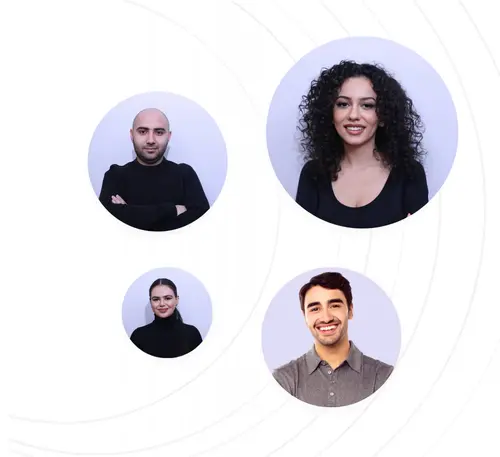Updated August 14, 2025
DA Metric for Link-Building: Should You Consider It? (2025 Edition)
Every second business owner is asking for high DA backlinks. Most of them don’t care about more important metrics like relevance, organic traffic, or (at least) content quality of a website.
But I don’t blame them; they might just not be aware of what’s going on in the SEO industry or how search engines prioritize backlinks. I blame SEO agencies, link-building specialists, and freelancers who choose to make their job easier by selling high DA websites (awful, honestly).
Again, I couldn’t stay silent, so I decided to craft a guide that finally explains what Moz DA really is, why you shouldn’t rely on it, how to evaluate backlinks using better metrics, and how to play it safe. Stick around, by the end, you’ll thank me.
What Is DA (Domain Authority)? A Quick Overview
Domain Authority, or DA, is a score created by Moz to estimate how likely a website is to rank in Google compared to other sites. It’s based mostly on backlinks: how many other sites link to it, and how strong those sites are. The score goes from 1 to 100. The higher the number, the stronger the domain looks in the eyes of Moz.
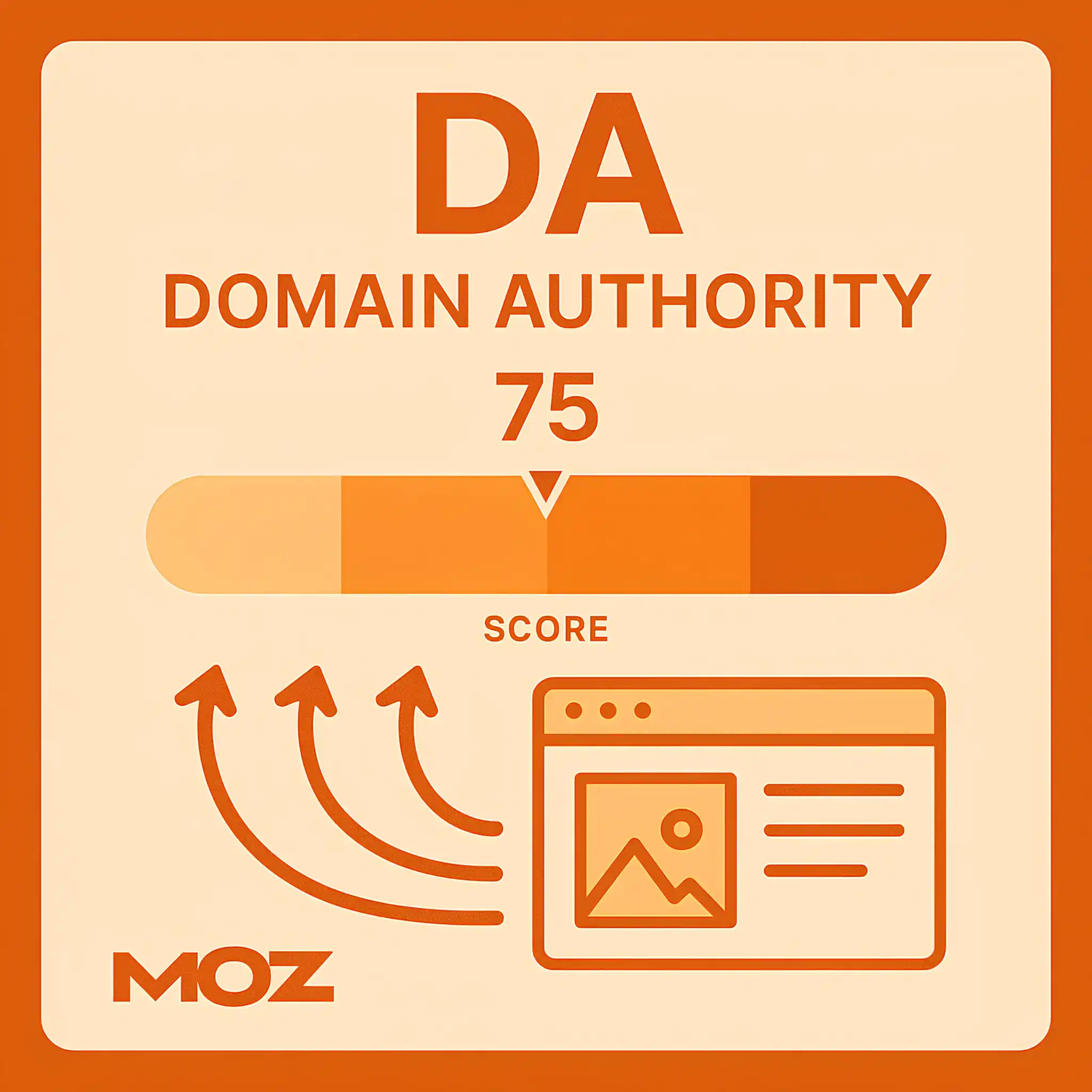
So, it’s mostly just math based on backlink profiles. Sometimes, if other sites around you get stronger, your DA might drop even if you did nothing wrong. So, it’s not stable, and it’s definitely not something Google sees or cares about.
Moz has its own data, and it’s not the same as what Google sees. So DA is just one tool’s opinion of a domain’s “strength.” Helpful sometimes, but definitely not the full picture.
Why DA Became the Industry Standard for Link Quality?
I would explain it like this: clients want numbers, SEO agencies want to look good. DA gave everyone a nice, clean score to throw into reports and say, “Look, this link is high-quality.” It became the quick way to sell links, track progress, and show results, without explaining the full story behind a backlink.
Over time, that standard turned into a habit. Now people get high DA backlinks without checking if the site is relevant, trusted, or even getting any traffic.
Google’s Opinion About Moz DA
John Mueller, a Search Advocate at Google, has addressed Moz’s Domain Authority (DA) on Twitter (now X), Reddit, and other platforms many times over the years. His position has been consistent and clear:
Summary Table: Google’s View vs. Moz DA:

Real Search Engine Signals vs. Third-Party Metrics
Moz isn’t the only metric SEO folk care about. Metrics like Ahrefs DR, Majestic TF and CF, SEMrush AS, and a bunch of others just confuse clients and business owners. You’ll see hundreds of job posts like that on Upwork, Fiverr, Facebook groups, and even Slack channels.

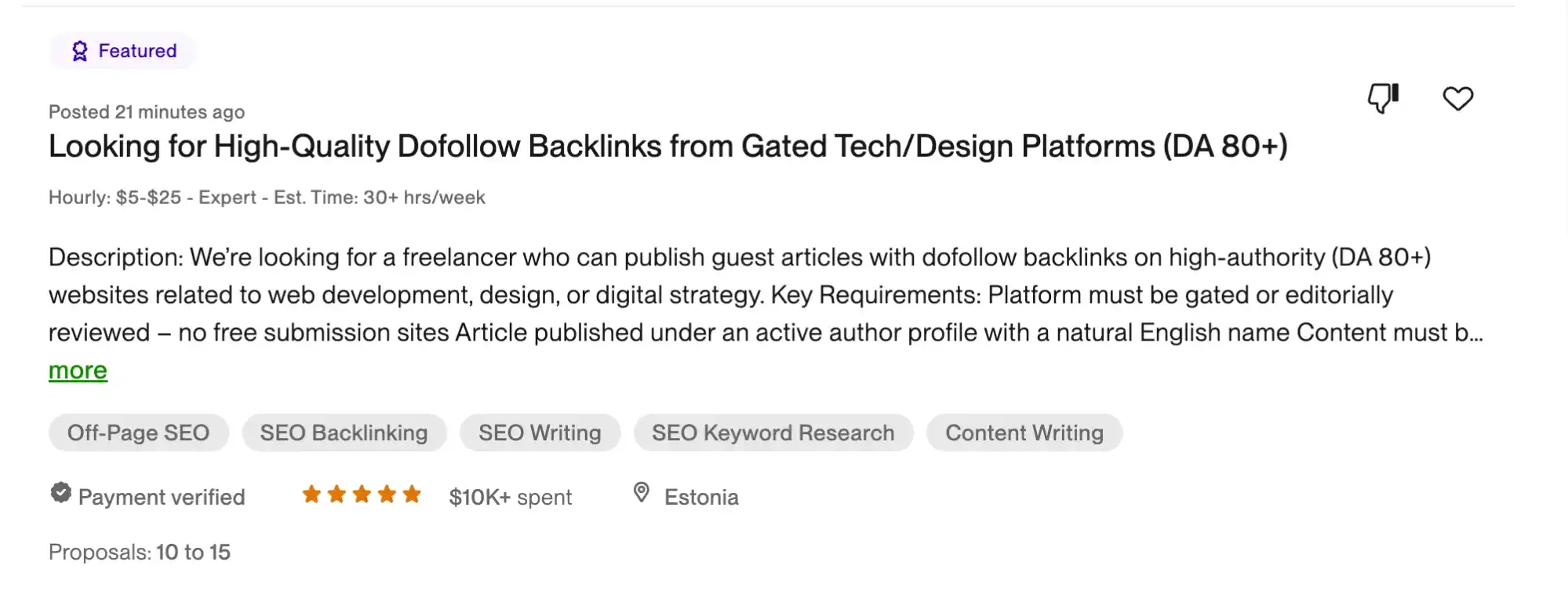
Everybody’s trying to secure links from free guest post sites, backlink marketplaces, or buying $20–$50 links without thinking about the consequences.
However, as I already said, these are third-party inventions. Google looks at a lot of things when deciding what to rank. Things like how trustworthy a site is, how relevant it is to the topic, how natural the backlinks are, and how people interact with the content. None of that is measured by a DA score.
So if you’re serious about link-building, here’s what you should consider instead of DA: relevance, quality of the content, real traffic, and whether the site has any actual trust or presence in your industry.
Ask yourself: Would Google see this site as legit and helpful, or just another domain selling links to anyone with a budget?
Here are the top Google ranking factors to consider, instead of relying on Moz DA.
| Ranking Factor | What It Means | Why It Matters | How to Improve It |
|---|---|---|---|
| Relevant Backlinks | Links from authoritative, topically related websites | Google sees them as endorsements of your site’s credibility | Earn links through guest posts, PR, and useful content |
| Content Quality | Depth, originality, and usefulness of your content | Google rewards content that satisfies user intent | Answer real questions, show expertise, update regularly |
| Search Intent Match | How well your page aligns with what the user is looking for | Poor intent match means poor rankings, even with links | Study top-ranking pages and match structure/purpose |
| Page Experience (UX) | Load speed, mobile-friendliness, and site usability | Google prioritizes fast, easy-to-use pages | Improve Core Web Vitals, mobile layout, etc. |
How to Evaluate Backlinks: What Matters More Than DA?
I know many websites with high DA scores that either got penalized or haven’t even gotten any meaningful traffic yet. The reason is pretty obvious (at least to me); search engines look at hundreds of ranking factors beyond just backlinks. Especially now, it’s insanely hard to rank at the top when you have to take into account things like Google’s AI Overview, E.E.A.T. guidelines, heavy competition, and more getting in the way.
If you want to see real results, you should understand that SEO takes time; way more time than channels like paid search (Google Ads, Facebook Ads, etc.), and if you want to build real authority, then learning how to assess backlink opportunities must be your number 1 goal.
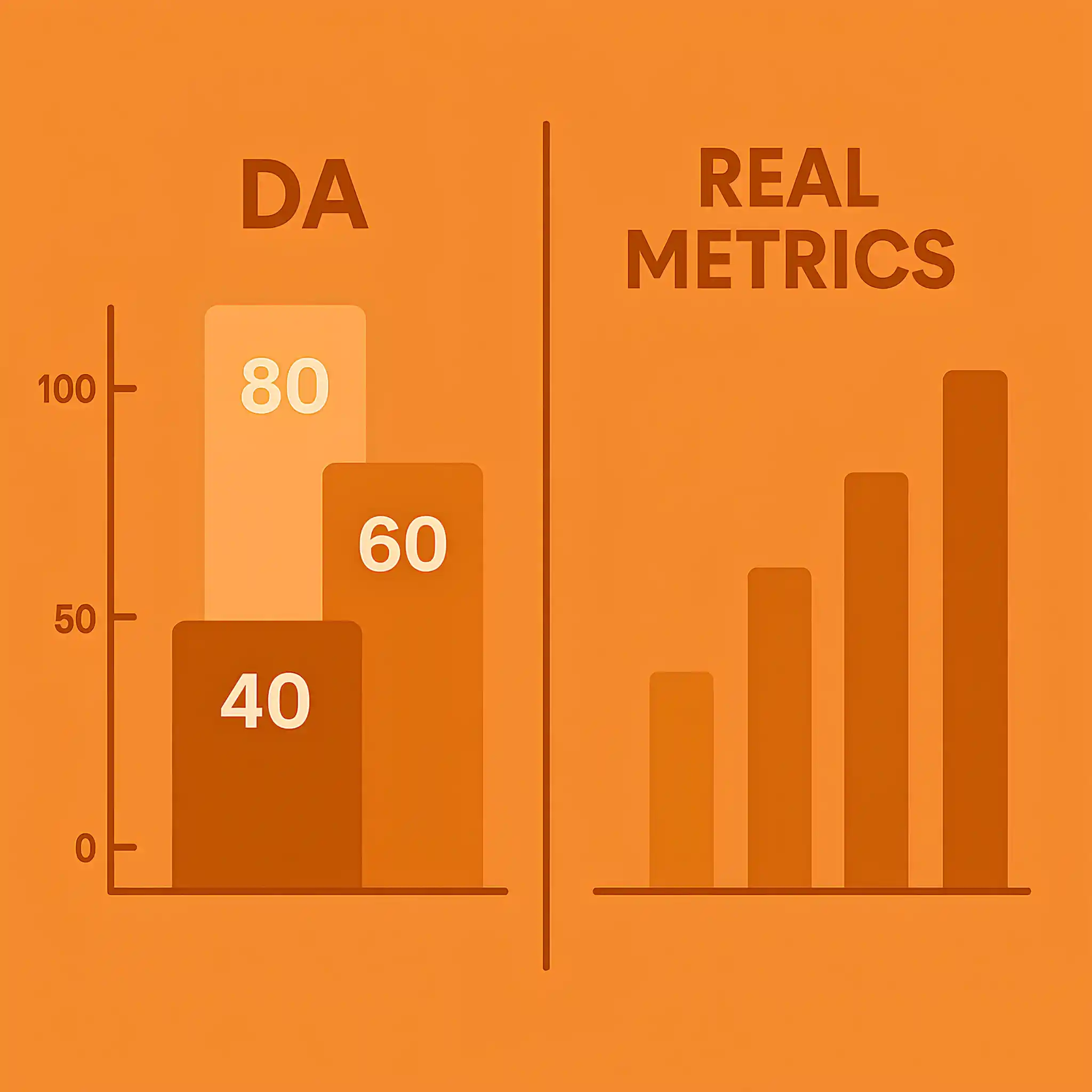
So, what are the top metrics I pay attention to instead of DA? When I’m prospecting and vetting websites, I consider the following metrics:
| Metric | What It Tells Me | Why It’s Useful | Where I Check It |
|---|---|---|---|
| Organic Traffic | If the site actually ranks and brings real visitors | Traffic shows real value, no traffic = no trust from Google | Ahrefs, Semrush, Similarweb |
| Referring Domains | How many unique domains link to the site | A diverse backlink profile signals broader trust and reach | Ahrefs, Majestic |
| Topical Relevance | Is the site’s content relevant to my niche? | Relevance boosts contextual value of the backlink | Manual review, site content scan |
| Index Status | Are pages indexed and ranking in Google? | If it’s not indexed, Google doesn’t trust it, neither should I | Google Search / “site:” search |
I don’t care about DA or DR. For me, it’s better to secure a backlink from a website with 10K organic traffic and 15 DA than from one with 80 DA but only 100 visits a month.
I’d rather buy a backlink (or earn one) from a niche blog with low DA than get pitched by some publisher pushing something like this:
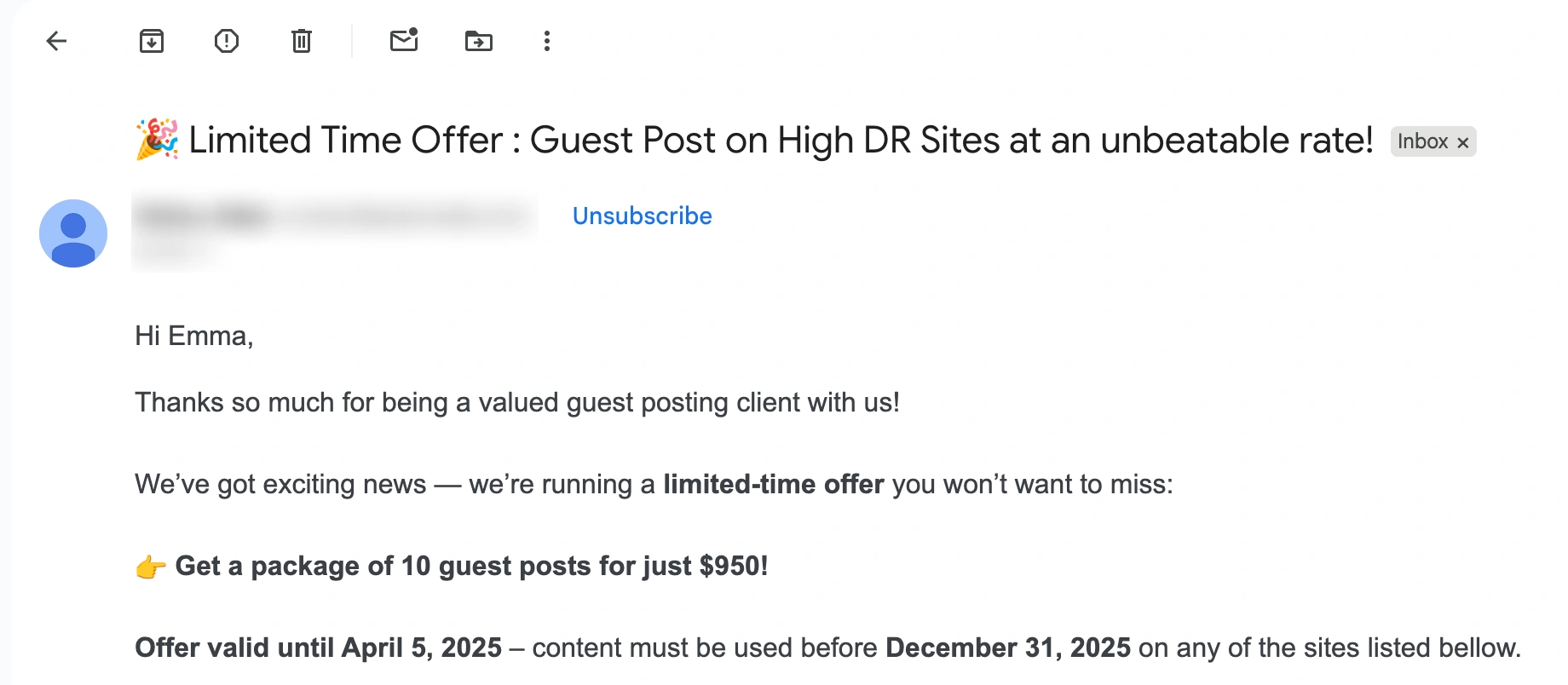
Of course, a lot of stuff is different depending on the link-building technique you’re using. For example, if I’m doing link-building for a SaaS company, I don’t just look at organic traffic and traffic history, I also pay attention to things like content quality, top keywords, backlink profiles, and even how many external links are already in a single article if I’m trying to secure a backlink through niche edits technique.
On the other hand, if I’m running HARO or digital PR campaigns, I know that sometimes it’s just not realistic to get super relevant links, but the ones I earn from Forbes, Shopify, or CNN are way more valuable than a few niche-relevant sites.
When Can DA Still Be Useful in Link-Building?
When I’m dealing with thousands of websites, I use DA to clean things up fast. In most cases, if a site’s under DA 10 or 15, I usually remove it from my list because those sites have not generated traffic yet (there are exceptions, though).
For example, I might filter DA on Pitchbox when running link-building campaigns.
Same thing when I run big link-building outreach campaigns. If I don’t set a minimum, the team pitches random blogs that won’t move anything. So we’ll say something like “stick to DA 20+ unless the site’s obviously great.” That way, we don’t waste effort on sites that won’t help rankings or traffic.
Please understand, I’m not using DA to judge quality, I’m just using it to avoid wasting time. Simple as that.
Can You Manipulate Your Moz DA? (Common Purposes & Risks)
Unfortunately, yeah, you can, and many do. For example, some SEO agencies or freelancers trying to look impressive, start building hundreds of low-quality links from Private Blog Networks (PBNs), link farms, or even spammy forums.
Moz’s algorithm can be fooled if enough of these spammy sites point to your or your clients’ websites.
Another scenario is when PBN or link farm owners manipulate DA just to sell you links (because they know how attractive high-DA websites are). They’ll redirect expired domains with previous high authority into their PBN network to artificially inflate domain metrics.
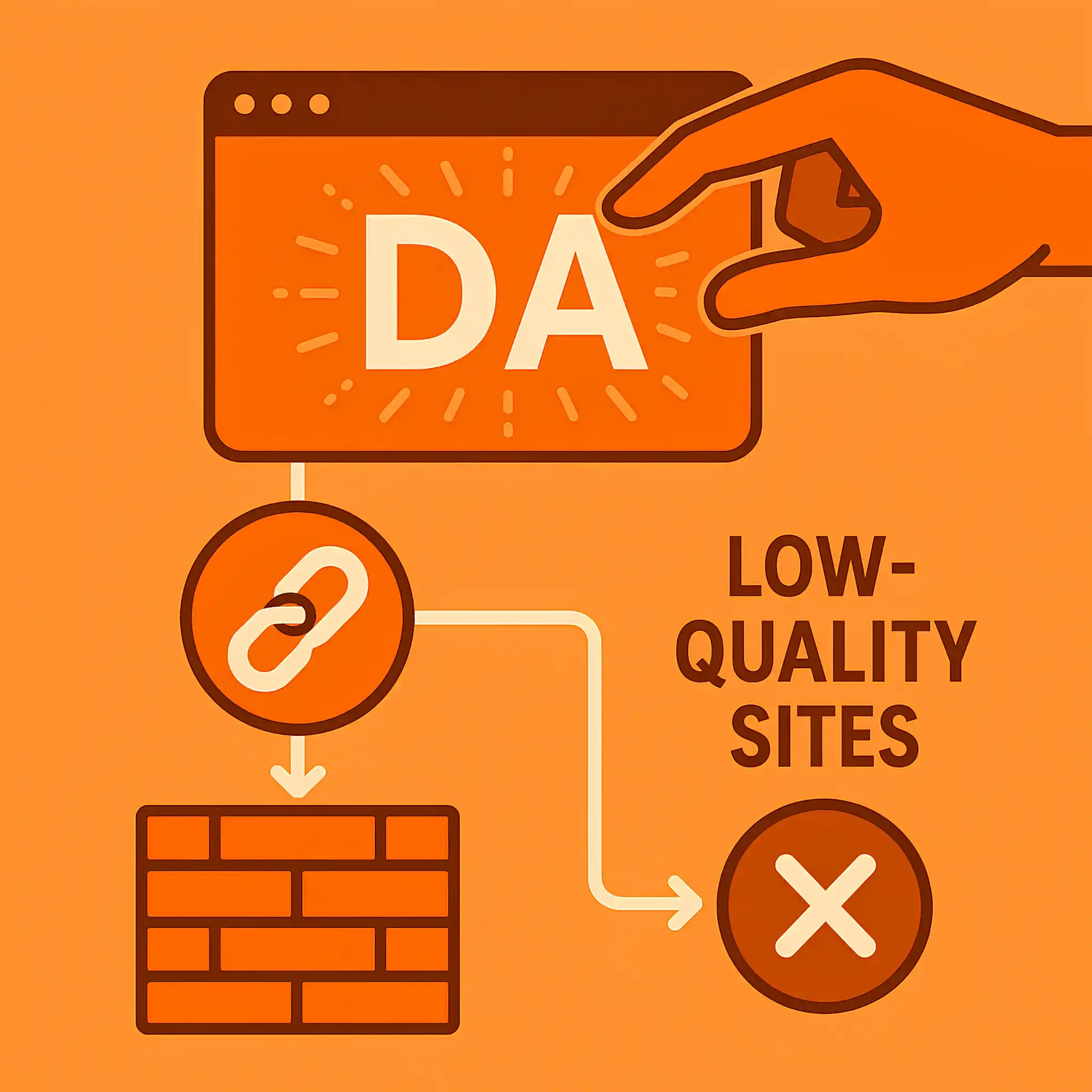
Or they’ll purchase penalized but formerly authoritative domains and just add some fresh design and AI content on top.
At first glance, everything looks okay: high DA, fast response time, clean layout. But dig a little deeper, and you’ll find a toxic backlink history, irrelevant anchor patterns, or even manual actions.
How To Increase Domain Authority (DA)
If you really want to increase your Moz DA, the first thing I’d tell you is to stop obsessing over it. I know that sounds weird, especially coming from someone in SEO, but listen. Instead, put your energy into building real authority. I’m talking about getting mentions from publications, earning links that make sense contextually, and creating content that’s so valuable people can’t help but reference it.
Things like building PR backlinks through original stories or data, putting together linkable assets like free tools or interactive guides, or simply writing content that’s really helpful and not written for the algorithm; this is the stuff that moves the needle.
Don’t fall into the trap of buying links from random sites that exist only to sell links. Don’t waste time spamming forums, creating Web 2.0s, or mass-submitting to directories thinking it’s 2012.
Remember, Google wants signals of trust, authority, and credibility.
If you still care about DA, fine. But use it for what it is, a quick filter. Not a KPI.
Once you start doing this the right way, you’ll notice your organic traffic grows. Your rankings improve. You’re suddenly dealing with inbound leads or comments on your content. You’re busy.You don’t even have time to check Moz DA.
Should You Pitch DA to Clients? (And What to Say Instead)
I think yes, you can mention DA or DR to clients. It’s okay to include it in reports, just so they have something to look at. Some clients like numbers; it helps them feel like things are moving. But you should also explain that DA isn’t a top priority. It’s not what Google uses to rank websites. It’s just a score created by Moz to guess how strong your site’s backlink profile is.
I personally include DA or DR just for the records, but I never work with clients who make DA their number one requirement or set weird metrics like, “The websites must be 50+ DA and at least 1000 traffic.”
Honestly (just between us), a real 50 DA website usually has way more than 1000 traffic, if it’s grown naturally over time.
Can a Low DA Site Still Pass Valuable Link Equity?
Yes, absolutely. A site with low DA can still pass strong link equity if it’s relevant to your topic, trusted in its niche, and gives you a dofollow link. As I said, DA doesn’t always reflect the real value of a website. Some websites are brand new or don’t have many backlinks yet, but they still rank well, have real traffic, and are seen as trustworthy by Google.
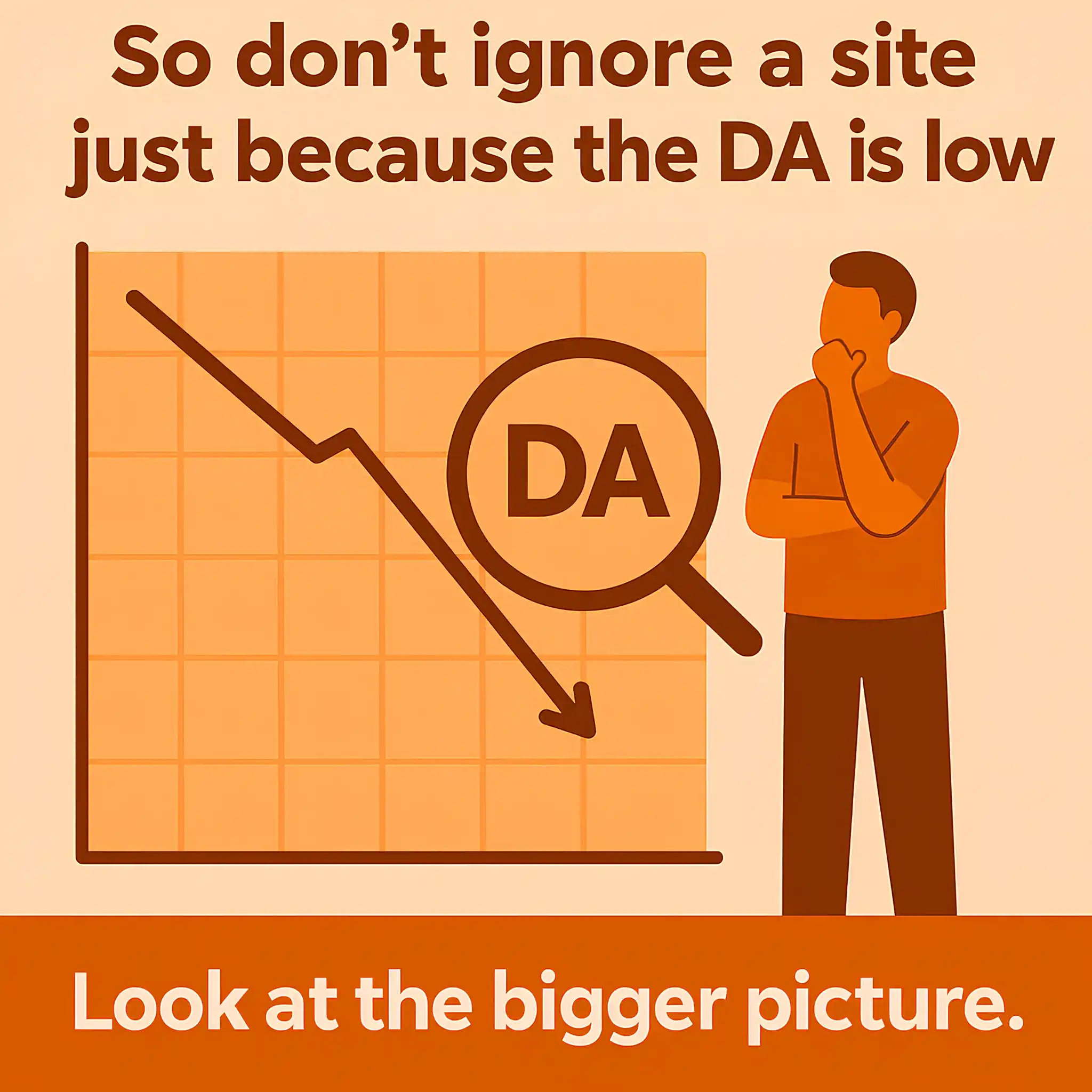
If a site is in your niche, has great content, and your link fits naturally within that content, it can still help your SEO, even if the DA is under 20. Plenty of “low DA” links outperform links from high DA sites that had no real audience or topical relevance.
How Often Is Domain Authority (DA) Updated on Moz?
Moz updates DA roughly every 3 to 4 weeks. So if you’ve recently earned some backlinks, you might not see any DA change right away. Sometimes it takes a few weeks for Moz’s index to find those new links.
Keep in mind, Moz doesn’t crawl the entire internet like Google does, so their link data is limited. That means some backlinks might never appear in their system or maybe much later.
Do High-DA Backlinks Accelerate Domain Authority Growth?
Yes, they can, but only to a point. Getting backlinks from high-DA sites can help increase your own DA faster, but it depends on a few things. First, the link has to be dofollow. Second, the page that links to you should be indexed and ideally have some authority of its own. Finally, the site should be somewhat relevant to your niche.
I mean, a random backlink from a DA 90 site that doesn’t relate to your content won’t do much. On the other hand, a dofollow link from a DA 40 website that’s super relevant and trusted by Google could help you way more.
Why Did My Moz DA Drop?
There are a few common reasons your Moz DA might drop, and most of the time, it’s not something to panic about. First, remember that DA is based on Moz’s link index. If they lose track of some of your backlinks, or if those pages get deleted, noindexed, or lose authority, your DA can drop even if nothing changed on your end.
It could also be that Moz’s algorithm changed. They update how they calculate DA from time to time.
Another reason could be that the links you’ve built recently aren’t as strong as the ones you lost.Maybe you got a few low-value links, while some of your older, higher-value links disappeared without you noticing.
Why Fast Does Moz DA Grow?
It depends on how strong the links are that you’re getting, how fast you’re earning them, and what kind of websites are linking to you. If you secure a few good dofollow links from trusted, relevant sites, you might see a jump in your DA within a month or two. But if you’re getting low-impact links or building slowly, the change can be very gradual, or barely noticeable.
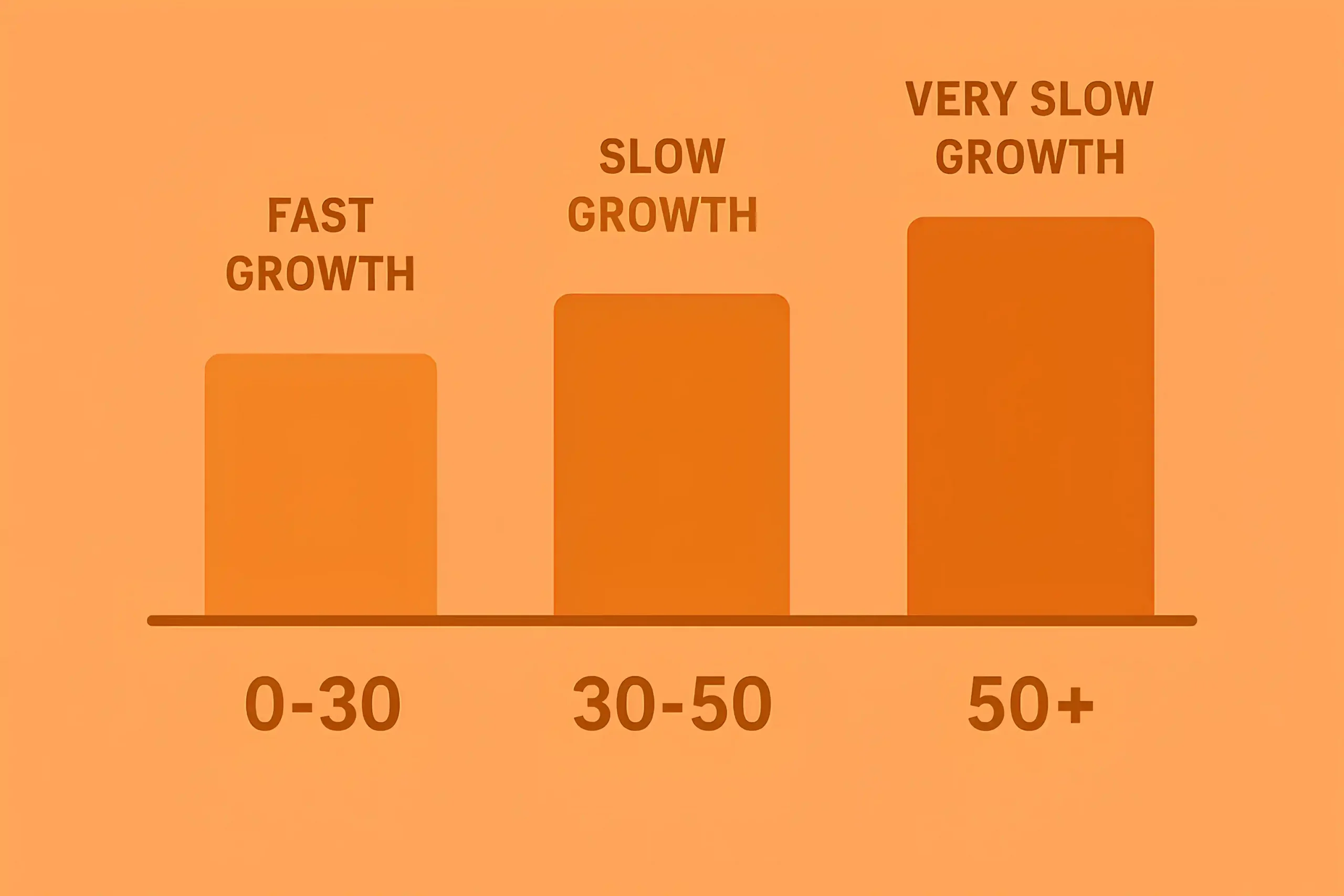
Also, the higher your DA gets, the harder it becomes to grow it further. For example, going from DA 10 to 20 can happen much faster than going from 40 to 50. It works on a kind of logarithmic scale, meaning it takes more effort to move up once you’re already at a decent level.
How Does Moz’s Spam Score Affect DA and Link Value?
To be honest, I don’t track Moz’s spam score, and I never really have. It might sound surprising, but Moz’s spam score is just an internal metric based on patterns they’ve seen across low-quality sites, but it’s not something Google uses. For example, Netflix shows a high spam score in Moz. But Netflix is Netflix.
I care way more about whether a site has real traffic, ranks for relevant keywords, and publishes quality content.
Can Paid Links Improve DA?
It does not matter how you acquire backlinks or which link-building techniques you use. It’s just important to buy or earn backlinks from high-quality websites
Is Moz DA Free?
Yes, you can check Moz DA for free using the MozBar extension or Moz’s Link Explorer, but it comes with limits. To see more detailed link data, you’ll need a Moz Pro subscription. For quick DA checks, the free version is enough, but for deeper analysis, you’ll want a paid plan.
Can I Improve DA Without Backlinks?
I don’t think so. You can improve your content, speed, and structure for better SEO overall, but DA itself is tied to backlinks.
Does Domain Age Impact DA?
No, domain age doesn’t directly affect Moz DA. A brand-new site can have a high DA if it earns strong backlinks quickly, while an old domain with few or weak links can have a low DA.





